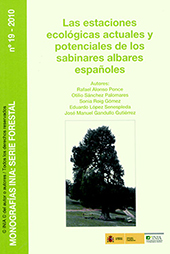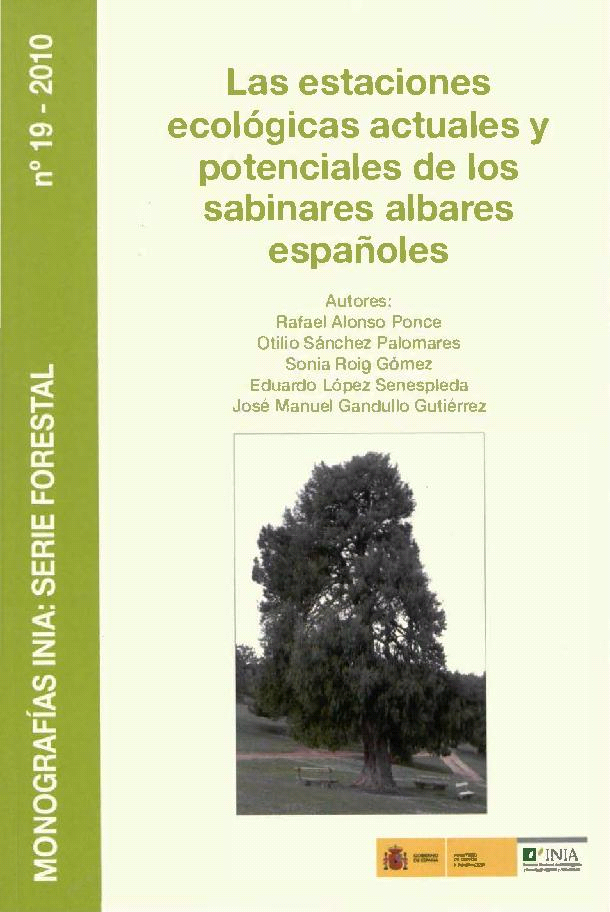Las estaciones ecológicas actuales y potenciales de los sabinares albares españoles
188 p. : ill. col.
El enebro o sabina albar, Juniperus thurifera L., se extiende por casi 600.000 ha del territorio español, de las cuales aproximadamente en la mitad es la especie arbórea la dominante. La importancia de la sabina albar en nuestro país, donde su expansión en las últimas décadas es un hecho constatado, justifica abordar la tarea de conocer de una manera sistemática y cuantitativa sus requerimientos ecológicos. Los objetivos de esta monografía son, fundamentalmente, los siguientes: 1) Analizar las analogías y diferencias existentes entre los biotopos que sirven de asiento a los sabinares albares españoles (Juniperus thurifera L.) según las regiones en que se encuentran. 2) Definir el hábitat general de los sabinares albares españoles analizando sus principales características fisiográficas, climáticas y edafoclimáticas.
3) Comparar este hábitat con el de otras especies estudiadas según esta metodología y deducir las consecuencias selvícolas en cuanto a posibilidad y conveniencia de creación de masas mixtas o transformación en ellas de masa puras ahora existentes. [Texto de la editorial]
Spanish juniper (Juniperus thurifera L.) woodlands occupy more than 600.000 ha in Spain, a half of them being pure or juniper-dominated mixed stands. The importance of the species in this country, where thousands of hectares of abandoned marginal agricultural lands have been encroached by junipers, warrants the task of achieving the systematic and quantitatively knowledge of its autoecological features. The objectives of this monograph are mainly the following: 1) To analyze the similarities and differences between the habitats that serve as seating for the Spanish juniper. 2) To define the overall habitat of the Spanish juniper analyzing the main physiographic, climatic and soil features. 3) To compare with the habitat of other species studied using this methodology and to draw the silvicultural consequences about the possibility and desirability of creating mixed stands or converting the now existing ones in them. [Publisher's text]
-
Información
ISBN: 9788474985481
COLECCIÓN
MATERIAS



